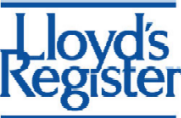LR Alert: Changes to the ISM Code
Amendments to the International Safety Management (ISM) Code will enter into force on 1 January, 2015, introducing new requirements for manning and company verification, and new references to related IMO guidance, as follows:
Changes to manning requirements
Amended paragraph 6.2 now states that:
“The Company should ensure that each ship is:
- manned with qualified, certificated and medically fit seafarers in accordance with national and international requirements; and
- appropriately manned in order to encompass all aspects of maintaining safe operations on board.”
Note: this amendment means that compliance with minimum safe manning may not be sufficient when taking into account the operational requirements of the ship. It complements Regulation 2.7 of the Maritime Labour Convention, 2006, which also requires that all operational aspects are taken into account when reviewing manning levels.
New company verification requirement
New paragraph 12.2 states that:
“The company should periodically verify whether all those undertaking delegated ISM-related task are acting in conformity with the Company’s responsibilities under the Code.”
This reinforces the requirement for companies to verify that all personnel carrying out ISM-related tasks are doing so in accordance with the requirements of the code. Companies are reminded that this applies equally to their own staff and sub-contractors.
New footnotes
New footnotes detail relevant IMO circulars, guidelines and recommendations that should be reviewed. The foreword reminds companies that although these footnotes are not requirements, they should still be taken into account when developing and reviewing a Safety Management System (SMS).
It is the company’s responsibility to ensure that all existing and future guidelines and recommendations are reviewed for relevance, and taken into account or adopted within the SMS.
For detailed information on the amendments, see IMO Resolution MCS.353(92)
What to do now
Companies should review their SMS to ensure ongoing compliance with the code, taking into account the amendments detailed above and the relevant guidelines and recommendations.















